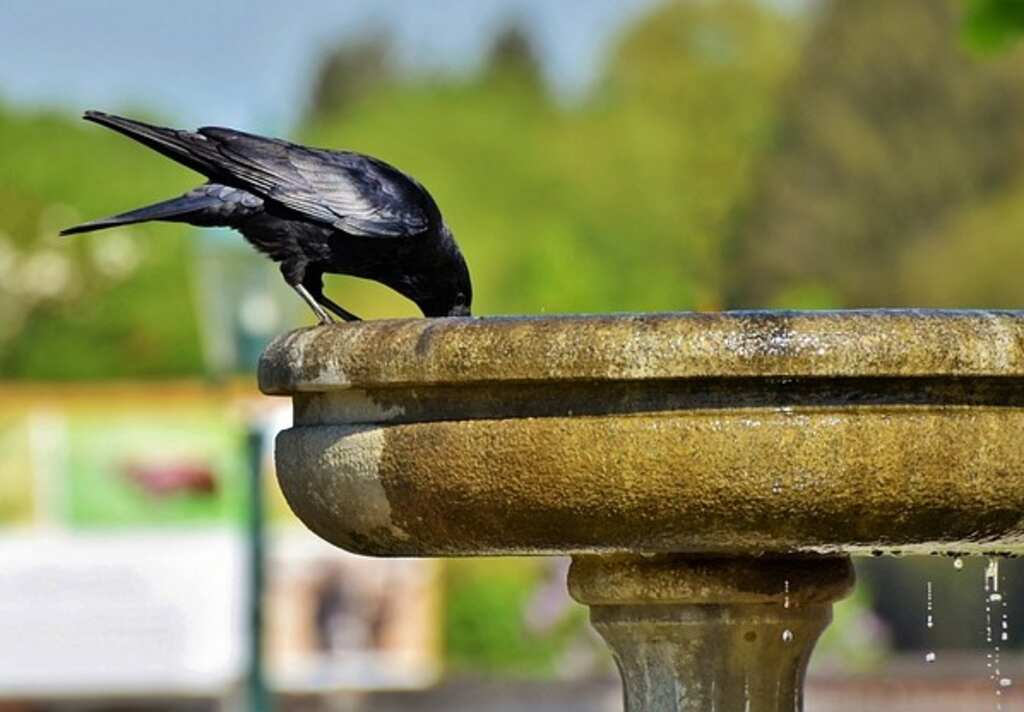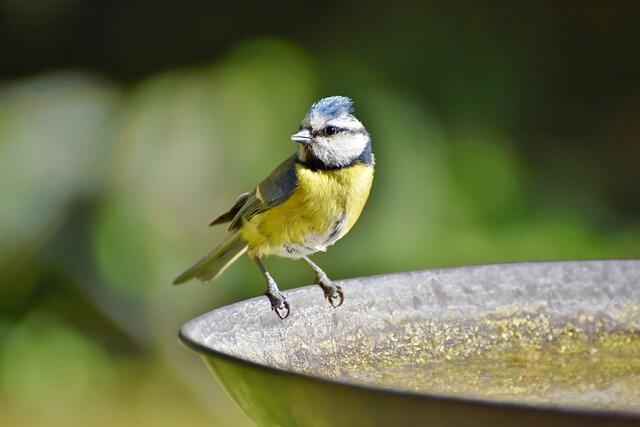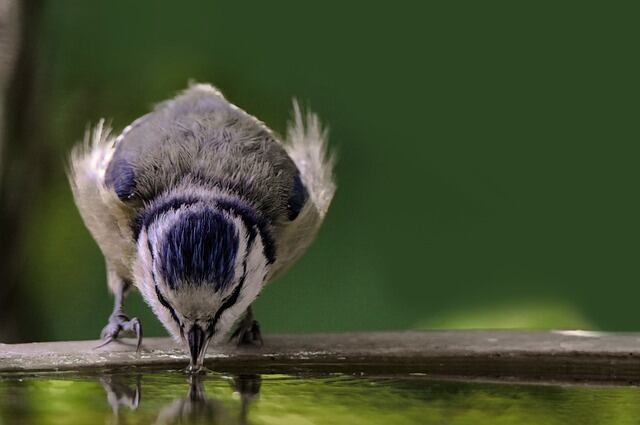Caring for backyard birds can be a rewarding experience. Watching these beautiful creatures flutter and play in their natural habitats is truly meditative. But in order to provide the best care for our feathered friends, we need to understand how long they can go without an essential component of life, water!
In this blog post, we’ll explore the answer to the question “How long can birds go without water?” We’ll examine information and helpful tips on providing adequate hydration to birds in your yard. So, let’s dive into finding out how to keep our avian companions hydrated and healthy.
Table of Contents
- 1 How long can a bird go without water?
- 2 Frequently Asked Question
- 2.1 How often should I change the water in my bird bath?
- 2.2 Can I use a water fountain in the winter?
- 2.3 What should I do if I find a dehydrated bird?
- 2.4 Can birds drink tap water?
- 2.5 Is it necessary to add electrolytes to a bird’s water?
- 2.6 How long can parakeets go without water?
- 2.7 How long can parrots go without water?
- 2.8 How long can a magpie go without water?
- 2.9 How long can pigeons go without water?
- 2.10 How long can baby birds go without water?
- 2.11 How do you know if your bird is dehydrated?
- 2.12 Can birds drink water out of a bowl?
- 2.13 Should you leave water out for wildlife?
- 2.14 How quickly do birds get dehydrated?
- 2.15 How do you know if a bird is thirsty?
- 2.16 How do birds get water when everything is frozen?
- 3 Author
How long can a bird go without water?
Backyard birds can survive for varying periods of time without water, but it’s important to provide them with fresh, clean water at all times. Factors such as temperature, humidity, species, age and health can impact a bird’s ability to survive without water.
Regularly changing their water and providing a safe, accessible water source will ensure the health and survival of your backyard birds.
I. Introduction
A. Overview of the Importance of Water for Birds
Water is essential for birds to survive and thrive. Not only do they need water to drink, but it also helps them maintain a healthy body temperature in hot climates. Birds use water to preen their feathers, which helps keep them waterproof and insulated from the cold.
Additionally, water can help improve digestion as well as decrease fatigue after long flights by providing much needed hydration. In some cases, birds may even search for food in or near bodies of water due to its abundance of prey items such as insects and fish.
Without regular access to fresh, clean water, birds are likely to suffer from dehydration, malnutrition or even death. It’s important that birders not only provide plenty of clean drinking sources but also set up birdbaths to attract more feathered friends!
B. Discussion on How Long They Can Survive Without It
Birds need fresh water to survive just like any other living creature. Without access to it, their bodies will eventually become dehydrated. The amount of time a bird can last without water heavily depends on the species, size, habitat and environment. Generally speaking, most birds can go for up to several days without having access to fresh water.
This is because they are able to obtain much of their hydration from the food they eat such as fruits and insects or through metabolic pathways in their livers that produce moisture-rich fluids. However, those kept in captivity should be provided with an adequate supply of clean drinking water at all times.
Birds living in drier climates may have increased needs for hydration due to higher temperatures which lead to faster rates of dehydration. In extreme cases, if left without access to water birds may die within 24 hours or less making it very important that they always have an available source of clean water.
II. Physiology of Birds and Water Requirements
A. Types of Water Needed by Birds
Birds need two types of water to maintain important physiological functions. They require free-standing fresh water, such as from a bird bath, for drinking and bathing. This type of water helps keep the bird hydrated and removes dirt and debris from their feathers. The second type is ingested through food sources.
Birds consume a variety of insects, fruits, vegetables, and grains which contain some moisture content. Therefore, it is important to make sure that whatever you are feeding your feathered friends has enough moisture to provide them with the proper nutrition their bodies need.
Additionally, birds can get some of the water they need from the environment by taking advantage of dew or rain droplets on plants or other surfaces. By providing a variety of accessible sources for watering your feathered friends, you’ll ensure they have plenty of fluids for optimal health and well being.
B. The Role That Water Plays in Their Lives
Water is a key component to bird life. It plays an important role in their physiology, helping them regulate body temperature, process calories, and maintain proper electrolyte levels. Water also helps birds keep feathers clean, by removing dirt and oils from the plumage.
Birds drink water directly from a source or absorb it through food sources such as fruits and vegetables. Drinking water for birds provides hydration that is necessary for all sorts of metabolic processes like digestion and excretion. Additionally, it can help alleviate stress from extreme temperatures or long flights.
Without adequate access to water, a bird’s health will suffer greatly, potentially leading to death if not replenished soon enough. As such, providing birds with plenty of water is essential for their survival and wellbeing.
III. Factors that Influence a Bird’s Survival Without Water
A. Diet and Availability to Food Sources
A bird’s diet is an important factor in how long it can survive without water. It is essential that the bird have access to nutritious food sources such as insects, fruits, and seeds that contain plenty of moisture.
Diets that lack moisture-rich foods may cause a bird to become dehydrated more quickly. Additionally, if a bird cannot find its food sources, it will become weaker over time due to starvation, which also increases the risk of dehydration.
Bird owners should ensure their birds have easy access to food sources and a diverse diet full of moist foods so they can stay hydrated and healthy for longer periods without water.
B. Environment Conditions
The environment conditions can have a big influence on how long a bird can survive without water. If the temperature is too hot, this will increase dehydration and reduce the amount of time a bird can last. A dry air environment can also be risky for birds as it increases their need for water to stay hydrated.
Additionally, high altitudes cause birds to lose moisture quickly due to the lower air pressure and relative humidity levels which means they won’t be able to go as long without water.
On the other hand, cooler temperatures or moist environments might give them more time before needing to drink again. In any case, providing access to clean fresh drinking water is essential for the health and wellbeing of our feathered friends.
C Temperature Mobility, Etc..
Temperature is one of the most critical factors that can influence how long a bird can survive without water. Staying in warm climates with low humidity might prolong a bird’s life without needing to drink. On the other hand, hot temperatures and high humidity could significantly shorten this time frame as the birds would be at risk of dehydration much quicker.
Additionally, mobility plays an important role in water conservation; birds that migrate around often need to find sources of hydration on their travels while stationary birds are more likely to take advantage of local water sources or receive precipitation when it rains.
Lastly, a bird’s diet may also affect its ability to last without water; eating foods high in moisture content can help counteract dehydration for longer periods of time. All these aspects should be considered when predicting how long a bird can live without watering itself.
D External Stressors (Chemicals & Predators)
External stressors can have dramatic impacts on a bird’s ability to survive without water. Predators, such as cats and hawks, can both physically attack birds or force them to expend energy fleeing in an effort to escape. Bird feathers also provide very little protection from some of the most common chemical pollutants found in the environment, including pesticides, herbicides, oil spills, and other toxins.
Exposure to these chemicals can cause a variety of health problems that compromise a bird’s ability to survive without water. Birds may suffer from weakened immune systems due to chemical exposure, compromising their ability to resist infection and dehydration.
In addition, pollutants can accumulate in the fatty tissues of birds which affects how quickly they become dehydrated when deprived of water. Because of this, it is important for us to take action against individuals who pollute our environment so we can help protect our feathered friends!
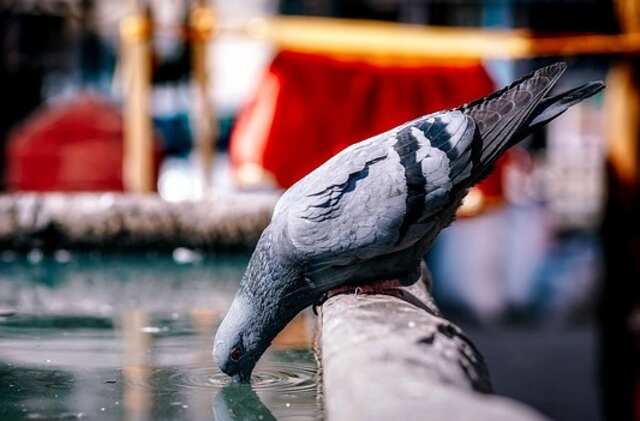
IV A Conclusion
Summarizing the Effects of Not Providing Adequate Resources for Survival
The conclusion is that not providing adequate resources for survival, such as water, can have a dramatic effect on the lifespan of birds. Without access to clean water, birds are at risk of dehydration and other health issues which can cause death if left untreated.
It is important to ensure that your feathered friends have access to clean sources of water and food so they can live long and healthy lives. Providing birds with basic necessities allows them to stay hydrated, energetic, and alert which contributes to their overall well-being.
Not providing proper resources for birds can be detrimental, so it is essential that the environment in which they reside has enough food and clean drinking water available for them to survive.
Frequently Asked Question
How often should I change the water in my bird bath?
Keeping your bird bath fresh and clean should be a top priority for any bird enthusiast. After all, birds rely on the water to keep themselves healthy and hydrated. But how often should you be changing out the water in your bird bath?
Experts advise that replacing the water in your bird bath twice a week is ideal. Not only will this prevent bacteria from growing, but it will also help attract more birds since they know they can trust the cleanliness of the water source.
Additionally, cleaning and scrubbing down your birdbath with soapy warm water once or twice a month helps ensure that it remains free from algae growth and other contaminants.
Staying on top of regular maintenance for your bird bath is essential for keeping it safe for wildlife to enjoy!
Can I use a water fountain in the winter?
As winter approaches, many bird watchers worry about what will happen to birds during those cold winter months. If you are one of these people, then you’re probably wondering if it’s okay to use a water fountain for birds in the winter?”
A heated water fountain will remain ice-free and ensure that your feathered friends have access to clean drinking water all year round, even during the coldest months of winter.
This type of bird bath is designed with a built-in heater which automatically turns on when air temperatures drop below freezing and off again when temperatures rise above freezing.
This allows for an uninterrupted source of fresh, clean drinking water for your birds and prevents them from having to drink from frozen ponds or lakes, thereby eliminating any risk of disease exposure.
What should I do if I find a dehydrated bird?
Finding a dehydrated bird can be a frightening and overwhelming experience. Without proper care, the animal may not survive. Knowing what to do in such a situation is key, as taking the wrong steps could actually harm the bird more than help it.
The best course of action if you find a dehydrated bird is to contact your local wildlife rescue group for assistance. It’s important that you don’t try to feed or hydrate the bird yourself without consulting professionals first, as incorrect handling or nutrition could further endanger its life.
Additionally, keep in mind that birds are wild animals and may be stressed by your presence; approach slowly and observe from a distance so that you don’t further frighten them.
Can birds drink tap water?
birds can usually drink tap water without any issues. The same minerals and chemicals that make tap water safe for human consumption are also beneficial for birds. Tap water typically contains trace amounts of zinc, magnesium and calcium which helps keep bird feathers healthy and strong.
Along with these necessary minerals, chlorine in the form of chloramine or chlorine dioxide eliminates harmful bacteria found in some naturally sourced waters, resulting in a cleaner drinking experience.
Although tap water is generally safe for birds to drink, it is best to check with a veterinarian before giving it as a regular part of your feathered friend’s diet.
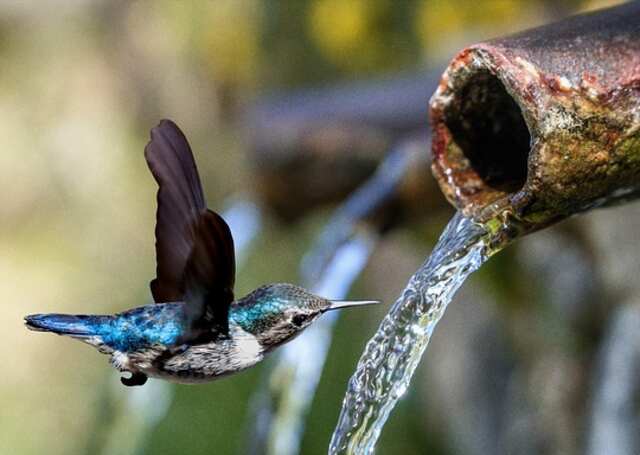
Is it necessary to add electrolytes to a bird’s water?
Adding electrolytes to a bird’s water is an important part of caring for them, especially when they are stressed by heat. It helps replenish lost minerals and salts that their body needs to stay healthy. Electrolyte solutions can be added to water or food, and it is especially important for waterfowl or other birds that are not able to replace these minerals as easily as other birds.
Electrolyte solutions are typically composed of sodium, potassium, calcium, and magnesium chloride. These help support the bird’s metabolism and nervous system function, as well as aiding in muscle recovery after strenuous activity or stress from the heat.
Additionally, electrolytes can also help reduce dehydration in hot weather since they contain both sodium and chloride which increase the absorption rate of water into cells within the body.
How long can parakeets go without water?
It might surprise you to know that parakeets, or budgies, can go without water for a day or two at most. Though they’re small birds, they have complex needs and require clean drinking water at all times. An occasional missed drink isn’t likely to cause any harm, but it’s important to make sure your pet is always hydrated and has access to fresh water.
Any longer than two days without water could be dangerous for the bird. Without the proper hydration levels, parakeets can become dehydrated quickly and may suffer from a variety of health problems such as weight loss, fatigue, lower fertility rates, and even death in some cases. To ensure their well-being it’s best to provide them with fresh clean drinking water every single day.
How long can parrots go without water?
Parrots rely heavily on water to stay hydrated and healthy. Depending on the size and age of the parrot, as well as the weather conditions, a parrot can usually go up to three days without drinking water; however, they should be given access to clean fresh water several times a day.
It’s important not only for their health but also for their mental wellbeing. Without sufficient hydration, a parrot will become lethargic and eventually succumb to dehydration. Therefore it is essential that owners provide plenty of fresh clean drinking water throughout the day so that their birds remain healthy and happy.
How long can a magpie go without water?
Magpies, like most birds, require access to a reliable source of water in order to live healthily and stay hydrated. While the exact amount of time may vary depending on environmental conditions and other factors such as age and health of the bird, it is generally estimated that magpies can go without water for 5 to 6 hours when temperatures are very hot and extreme.
In order to ensure optimal health and vitality, it is important to provide your magpie with clean fresh water daily. A shallow dish or birdbath should be accessible at all times in a safe location that is shielded from potential predators.
Additionally, during especially hot days, it may be necessary to check multiple times throughout the day that there is sufficient water available for the magpie’s needs.
How long can pigeons go without water?
Pigeons are surprisingly resilient when it comes to going without water. Depending on environmental factors, such as air temperature and humidity, a pigeon can go for up to 48 hours without water. In hot weather with extreme temperatures, their bodies become dehydrated more quickly and they require access to water within 2 days.
Heat also affects their ability to find food effectively, so having adequate access to clean drinking water is essential for birds in hot and dry climates. Pigeons need a reliable source of fresh water in order to stay hydrated and healthy.
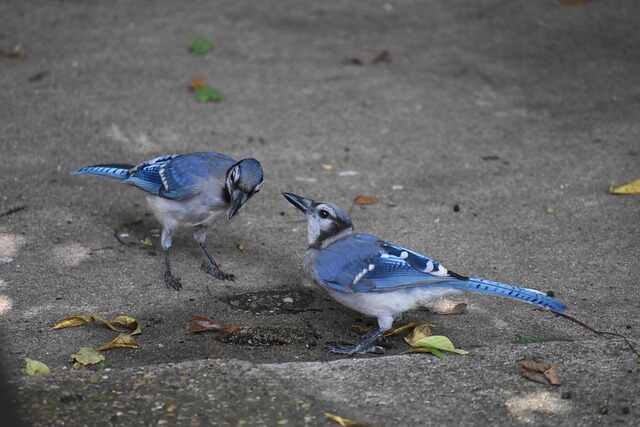
How long can baby birds go without water?
A Baby bird can survive up to 24 hours without water, depending on their age and the environmental conditions. For example, very young hatchlings may need to given water with a dropper every several hours in order to get enough fluids.
Older chicks may go for up to 24 hours between drinks of water; however, if temperatures are especially high outside they likely will require more frequent hydration.
Ideally baby birds should always have access to fresh, clean water either by adding it directly into their brooder or providing them with a shallow dish or bowl.
How do you know if your bird is dehydrated?
Dehydration in birds can be a serious problem, and it is important to identify the signs early. If you suspect your bird is dehydrated, look for common symptoms like sunken eyes, dry or flaky feathers, and an overall listlessness.
A dry beak and mouth are also signs of dehydration, along with decreased energy levels and a decrease in appetite. The skin on the chest should also feel slightly relaxed when gently pinched – if it feels stretched, this could indicate dehydration.
Finally, if your bird has urates that are white instead of yellow-greenish in color, this may also signal dehydration. All these signs should prompt you to contact an avian veterinarian as soon as possible.
Can birds drink water out of a bowl?
Yes, birds can drink water out of a bowl. This is a common practice for many pet bird owners who provide their feathered friends with fresh and clean water every day.
Bowls are generally the easiest option for providing birds with access to drinking water as they are easy to fill, move around if needed, and often come in different sizes which makes them suitable for all types of bird breeds.
Additionally, bowls allow birds to safely immerse their bills into the water which is an important part of keeping them hydrated. Finally, some bowls even come with special perches that help birds reach the water easier or prevent it from spilling when they land to take a sip.
Should you leave water out for wildlife?
Leaving water out for wildlife can be a great way to help the natural environment. Animals, especially in arid or desert climates, often depend on sources of water to survive. By leaving bowls or basins of fresh water outside available to wildlife, you can provide much-needed hydration and nourishment.
This can also help attract birds and other animals, who will benefit from a reliable source of hydration and food. Be sure that you check your local laws and regulations regarding feeding wildlife before you begin this practice.
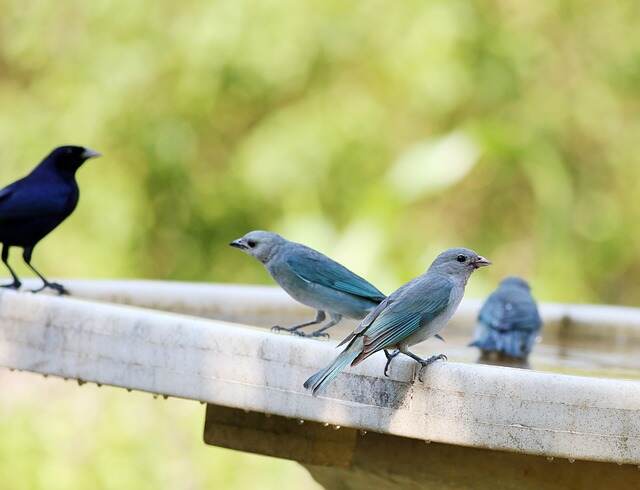
How quickly do birds get dehydrated?
Birds are highly sensitive to dehydration and can become dehydrated very quickly. Depending on the species, climate, and other factors such as how active they are, it is possible for a bird to suffer from dehydration in just two or three hours.
Dehydration leads to fatigue and makes them more vulnerable to disease and predators. A lack of fresh water also reduces the bird’s ability to groom properly which can cause drops in their immune systems.
Signs of dehydration in birds include sunken eyes, ruffled feathers, reduced appetite and droopiness when sitting. If you suspect your bird may be dehydrated, provide fresh water immediately so that it can properly hydrate itself.
How do you know if a bird is thirsty?
It is important to monitor your bird’s water intake, as dehydration can be deadly. Signs that a bird is thirsty include decreased activity, an increase in vocalizations, and a lack of alertness. A dehydrated bird will also have a dry mouth and swollen crop, or area near the neck which stores food.
Additionally, feathers may be fluffed up more than usual and wings may be held away from the body. If you notice any of these signs it is important to offer your bird freshwater immediately.
How do birds get water when everything is frozen?
When the temperatures fall and the ground freezes, birds face a challenge when it comes to finding water. Luckily, they have a few strategies to help them survive. Smaller birds may land on snow and use their body heat to melt it into water droplets.
They will also eat snow or scrape away the top layer of frozen soil in order to reach standing water beneath. Birds can also find unfrozen water near streams and lakes, which are typically insulated by the surrounding trees.
Some species may even fly up into clouds and catch raindrops with their beaks! With these clever techniques, birds can stay hydrated even during the coldest winters.
Related Post: Can Birds Die From Drinking Pool Water

